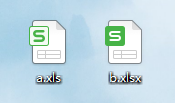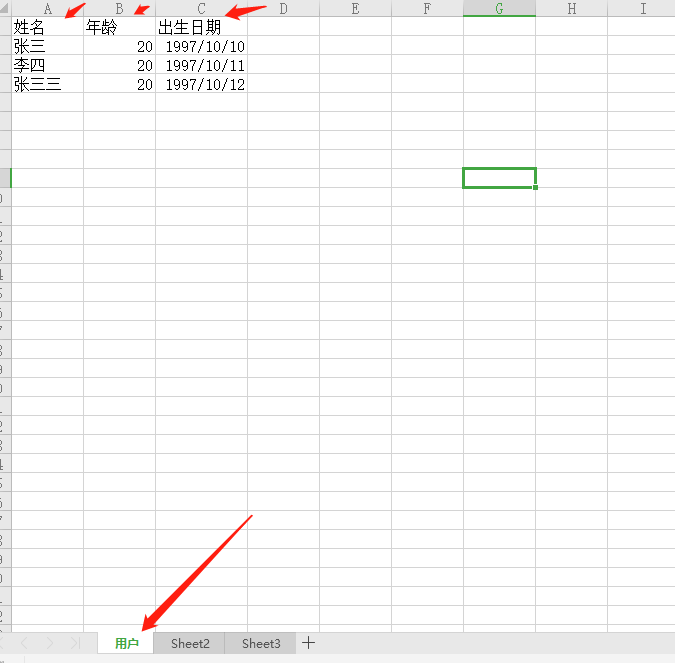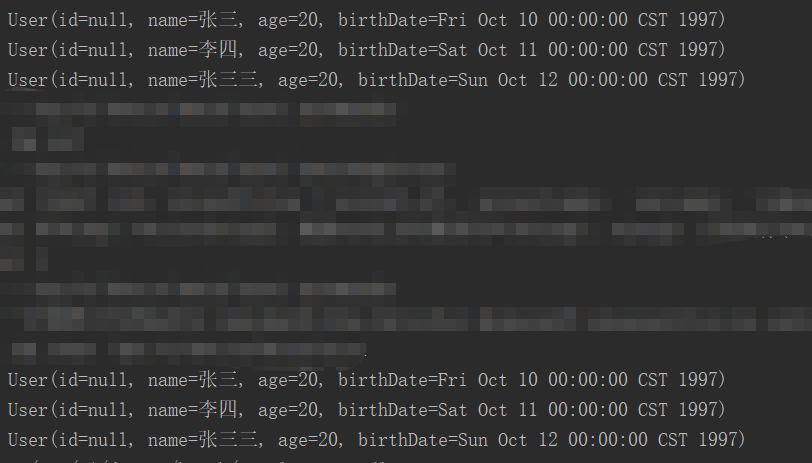溫馨提示×
您好,登錄后才能下訂單哦!
點擊 登錄注冊 即表示同意《億速云用戶服務條款》
您好,登錄后才能下訂單哦!
根據poi接收controller層的excel文件導入
可使用后綴名xls或xlsx格式的excel。
1.pom引入
<!-- poi 操作Excel -->
<dependency>
<groupId>org.apache.poi</groupId>
<artifactId>poi</artifactId>
<version>3.17</version>
</dependency>
<dependency>
<groupId>org.apache.poi</groupId>
<artifactId>poi-ooxml</artifactId>
<version>3.17</version>
</dependency>
2.ExcelImportUtil 工具類創建
import com.guard.biz.common.util.excel.ExcelIn;
import org.apache.commons.beanutils.BeanUtilsBean;
import org.apache.commons.lang3.StringUtils;
import org.apache.commons.lang3.reflect.FieldUtils;
import org.apache.poi.hssf.usermodel.HSSFDateUtil;
import org.apache.poi.ss.usermodel.Cell;
import org.apache.poi.ss.usermodel.Row;
import org.apache.poi.ss.usermodel.Sheet;
import org.apache.poi.ss.usermodel.Workbook;
import org.apache.poi.ss.usermodel.WorkbookFactory;
import org.slf4j.Logger;
import org.slf4j.LoggerFactory;
import java.io.FileNotFoundException;
import java.io.IOException;
import java.io.InputStream;
import java.lang.reflect.Field;
import java.lang.reflect.InvocationTargetException;
import java.math.BigDecimal;
import java.util.ArrayList;
import java.util.HashMap;
import java.util.List;
import java.util.Map;
/**
* @author Wei
* @time 2019/10/29
* @Description excel 導入工具類
*/
public class ExcelImportUtil<T> {
private static final Logger log = LoggerFactory.getLogger(ExcelImportUtil.class);
private static BeanUtilsBean beanUtilsBean = new BeanUtilsBean();
static {
beanUtilsBean.getConvertUtils().register(new org.apache.commons.beanutils.converters.DateConverter(null), java.util.Date.class);
}
/**
* 表頭名字和對應所在第幾列的下標,用于根據title取到對應的值
*/
private final Map<String, Integer> title_to_index = new HashMap<>();
/**
* 所有帶有ExcelIn注解的字段
*/
private final List<Field> fields = new ArrayList<>();
/**
* 統計表格的行和列數量用來遍歷表格
*/
private int firstCellNum = 0;
private int lastCellNum = 0;
private int firstRowNum = 0;
private int lastRowNum = 0;
private String sheetName;
private Sheet sheet;
public List<T> read(InputStream in, Class clazz) throws Exception {
gatherAnnotationFields(clazz);
configSheet(in);
configHeader();
List rList = null;
try {
rList = readContent(clazz);
} catch (IllegalAccessException e) {
throw new Exception(e);
} catch (InstantiationException e) {
throw new Exception(e);
} catch (InvocationTargetException e) {
throw new Exception(e);
}
return rList;
}
private List readContent(Class clazz) throws IllegalAccessException, InstantiationException, InvocationTargetException {
Object o = null;
Row row = null;
List<Object> rsList = new ArrayList<>();
Object value = null;
for (int i = (firstRowNum + 1); i <= lastRowNum; i++) {
o = clazz.newInstance();
row = sheet.getRow(i);
Cell cell = null;
for (Field field : fields) {
//根據注解中的title,取到表格中該列所對應的的值
Integer column = title_to_index.get(field.getAnnotation(ExcelIn.class).title());
if (column == null) {
continue;
}
cell = row.getCell(column);
value = getCellValue(cell);
if (null != value && StringUtils.isNotBlank(value.toString())) {
beanUtilsBean.setProperty(o, field.getName(), value);
}
}
rsList.add(o);
}
return rsList;
}
private void configSheet(InputStream in) throws Exception {
// 根據文件類型來分別創建合適的Workbook對象
try (Workbook wb = WorkbookFactory.create(in)) {
getSheetByName(wb);
} catch (FileNotFoundException e) {
throw new Exception(e);
} catch (IOException e) {
throw new Exception(e);
}
}
/**
* 根據sheet獲取對應的行列值,和表頭對應的列值映射
*/
private void configHeader() {
this.firstRowNum = sheet.getFirstRowNum();
this.lastRowNum = sheet.getLastRowNum();
//第一行為表頭,拿到表頭對應的列值
Row row = sheet.getRow(firstRowNum);
this.firstCellNum = row.getFirstCellNum();
this.lastCellNum = row.getLastCellNum();
for (int i = firstCellNum; i < lastCellNum; i++) {
title_to_index.put(row.getCell(i).getStringCellValue(), i);
}
}
/**
* 根據sheet名稱獲取sheet
*
* @param workbook
* @return
* @throws Exception
*/
private void getSheetByName(Workbook workbook) throws Exception {
int sheetNumber = workbook.getNumberOfSheets();
for (int i = 0; i < sheetNumber; i++) {
String name = workbook.getSheetName(i);
if (StringUtils.equals(this.sheetName, name)) {
this.sheet = workbook.getSheetAt(i);
return;
}
}
throw new Exception("excel中未找到名稱為" + this.sheetName + "的sheet");
}
/**
* 根據自定義注解,獲取所要導入表格的sheet名稱和需要導入的字段名稱
*
* @param clazz
* @throws Exception
*/
private void gatherAnnotationFields(Class clazz) throws Exception {
if (!clazz.isAnnotationPresent(ExcelIn.class)) {
throw new Exception(clazz.getName() + "類上沒有ExcelIn注解");
}
ExcelIn excelIn = (ExcelIn) clazz.getAnnotation(ExcelIn.class);
this.sheetName = excelIn.sheetName();
// 得到所有定義字段
Field[] allFields = FieldUtils.getAllFields(clazz);
// 得到所有field并存放到一個list中
for (Field field : allFields) {
if (field.isAnnotationPresent(ExcelIn.class)) {
fields.add(field);
}
}
if (fields.isEmpty()) {
throw new Exception(clazz.getName() + "中沒有ExcelIn注解字段");
}
}
private Object getCellValue(Cell cell) {
if (cell == null) {
return "";
}
Object obj = null;
switch (cell.getCellTypeEnum()) {
case BOOLEAN:
obj = cell.getBooleanCellValue();
break;
case ERROR:
obj = cell.getErrorCellValue();
break;
case FORMULA:
try {
obj = String.valueOf(cell.getStringCellValue());
} catch (IllegalStateException e) {
obj = numericToBigDecimal(cell);
}
break;
case NUMERIC:
obj = getNumericValue(cell);
break;
case STRING:
String value = String.valueOf(cell.getStringCellValue());
value = value.replace(" ", "");
value = value.replace("\n", "");
value = value.replace("\t", "");
obj = value;
break;
default:
break;
}
return obj;
}
private Object getNumericValue(Cell cell) {
// 處理日期格式、時間格式
if (HSSFDateUtil.isCellDateFormatted(cell)) {
return cell.getDateCellValue();
} else if (cell.getCellStyle().getDataFormat() == 58) {
// 處理自定義日期格式:m月d日(通過判斷單元格的格式id解決,id的值是58)
double value = cell.getNumericCellValue();
return org.apache.poi.ss.usermodel.DateUtil.getJavaDate(value);
} else {
return numericToBigDecimal(cell);
}
}
private Object numericToBigDecimal(Cell cell) {
String valueOf = String.valueOf(cell.getNumericCellValue());
BigDecimal bd = new BigDecimal(valueOf);
return bd;
}
}
3.ExcelIn注解
import java.lang.annotation.ElementType;
import java.lang.annotation.Retention;
import java.lang.annotation.RetentionPolicy;
import java.lang.annotation.Target;
/**
* @author Lei
* @time 2019/10/29
* @Description
*/
@Retention(value = RetentionPolicy.RUNTIME)
@Target(value = {ElementType.TYPE, ElementType.FIELD})
public @interface ExcelIn {
/**
* 導入sheet名稱
*
* @return
*/
String sheetName() default "";
/**
* 字段對應的表頭名稱
*
* @return
*/
String title() default "";
}
4.創建excel中的對象
import lombok.Data;
import lombok.ToString;
import java.util.Date;
/**
* @author Lei
* @time 2019/10/29
* @Description
*/
@ToString
@Data
@ExcelIn(sheetName = "用戶")
public class User {
private String id;
@ExcelIn(title = "姓名")
private String name;
@ExcelIn(title = "年齡")
private Integer age;
@ExcelIn(title = "出生日期")
private Date birthDate;
}
5.controller層接收
@PostMapping("/batch/excel")
@ApiOperation(value = "根據excel文件批量導入")
public ResponseVO batchAddDeviceByExcelImport(MultipartFile multipartFile) {
return new ResponseVO(deviceService.addDeviceByExcelImport(multipartFile));
}
6.service處理(此處僅打印)
public boolean addDeviceByExcelImport(MultipartFile multipartFile) {
File file = null;
try {
file = File.createTempFile("temp", null);
} catch (IOException e) {
e.printStackTrace();
}
try {
multipartFile.transferTo(file);
} catch (IOException e) {
e.printStackTrace();
}
file.deleteOnExit();
InputStream inputStream = null;
try {
inputStream = new FileInputStream(file);
} catch (FileNotFoundException e) {
e.printStackTrace();
}
ExcelImportUtil<User> reader = new ExcelImportUtil<>();
List<User> userList = null;
try {
userList = reader.read(inputStream, User.class);
} catch (Exception e) {
log.error(e.getMessage());
throw new CodeException("51302", e.getMessage());
}
userList.stream().forEach(e -> log.info(e.toString()));
return true;
}
7.測試
(1)兩種文件類型的excel

(2)excel中格式如下,注意紅色箭頭所指的地方 對應user對象中的字段以及sheet名

(3)swagger測試

(4)成功打印

總結
以上所述是小編給大家介紹的java springboot poi 從controller 接收不同類型excel 文件處理,希望對大家有所幫助,如果大家有任何疑問請給我留言,小編會及時回復大家的。在此也非常感謝大家對億速云網站的支持!
如果你覺得本文對你有幫助,歡迎轉載,煩請注明出處,謝謝!
免責聲明:本站發布的內容(圖片、視頻和文字)以原創、轉載和分享為主,文章觀點不代表本網站立場,如果涉及侵權請聯系站長郵箱:is@yisu.com進行舉報,并提供相關證據,一經查實,將立刻刪除涉嫌侵權內容。